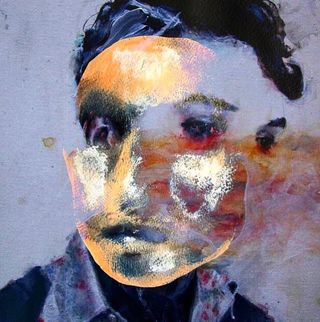Body Image
“At Odds with My Body”
Body Image Disorders and Somatic Depersonalization
Posted May 12, 2019

Relationships with our own body can be the most harsh, upsetting and destructive of all our relationships. We are keen to love our bodies. But we often hate them. Ashamed and frightened of them.
The most known types of disturbances of the relationships with our own body include Eating Disorders (restrictions of food intake); Body Dysmorphic Disorders (phobias or obsessions about ugliness of the body) and Illness Related Anxiety, traditionally known as Hypochondria (phobias or obsessions about bodily sickness).
The official guide to the terra incognita of psychic aberrations - The Diagnostic and Statistic Manual of Mental Disorders (DSM-V) - lists these three types separately, in different diagnostic groups. However, life does not consult DSM. Instead, life presents an abundance of mixed conditions combining signs of eating disorders, dysmorphia and hypochondria. For example, numerous stories of anorexia nervosa often show not only perception of one’s body as overweight with life threatening food intake restrictions, but also dysmorphic obsessions of “ugly body” and hypochondriac phobias of “fat metabolism disorder” or “hormonal imbalance.”
These mixed conditions confirm the clinical relevance of the classical conception of body image as the integration of all varieties of experiences of one’s own body – sensations, feelings, thoughts, dreams, memories, etc. Body image has three dimensions: physical appearance, physical wellbeing and physical behavior (eating, drinking, exercising, etc). Dysmorphia, hypochondria and eating disorders represent disorders of corresponding dimensions. Dysmorphia is characterized by distortions of the relationships with own physical appearance and stems from the image of an “ugly body.” Hypochondria is characterized by distortions in the relationships with physical wellbeing and stems from the image of a “sick body.” Eating disorders with destructive relationships to food are characterized by the distortion of the relationship with physical appearance and physical behavior, in particular, relationships with food and physical activities.
Body image critically develops during the period of the adolescent search for identity. It is the most vulnerable time for the beginning of eating disorders, dysmorphia and hypochondria. Body image comes as a part of teen’s internal mental world: as a personally biased construction rooted in phantasies, emotional traumas or psychological conflicts. Body image is subjective perception of physical self, not objective data of the person’s physicality. When a person with anorexia or a person with dysmorphia look in the mirror they see not the sum of physical parameters processed by the optical system of the mirror. They see the sum of their processing of the meaningful, but often hidden or inverted frustrations, disappointments or stresses. Body image is not a physically accurate reflection in the mirror. Body image is an emotionally and psychologically accurate reflection in the mirror of one’s own mind.
The mirror of mind is a figurative name for the phenomenon of self-consciousness, that also forms during adolescence. Consciousness means experience of presence in the world, relatedness to the things around. Self-consciousness means consciousness of self, experience of the presence of one’s own self. Self-consciousness provides the “I am” feeling. This basic awareness of ‘I’ creates a foundation of personal existence - the phenomenon of personalization. Self-consciousness integrates four components of personalization: vital self, related world, bodily self and mental self.
Body image is the product of self-consciousness, in particular, of two of its components: vital self-consciousness and bodily self-consciousness. Correspondingly, disorder of body image relate to disorder of self-consciousness, called depersonalization. Respectively, two forms of depersonalization – vital depersonalization and somatic (Greek word for bodily) depersonalization are closely interwoven into the clinical picture of the disorders of body image.
The central sign of depersonalization is a feeling of strange and painful changes of experiences of self. “I feel myself different. I do not recognize myself.” Vital and somatic depersonalization is concerned with experiences of changes and unreality of bodily self. “The face I see in the mirror looks strange as if it is not mine.” “My body feels as foreign.” “I feel weirdly at odds with my body.”
The role of vital and somatic depersonalization in body image disorders remains seriously unappreciated. A possible reason lies in “unnoticeable,” clinically invisible presentations of depersonalization. Giving rise to manifested signs of body image disorders, somatic depersonalization stays on the sidelines, whereas the visible signs of eating disorders, dysmorphia and hypochondria occupy the front stage of the clinical picture. Also it takes special skills to talk about depersonalization, to relate to a person with depersonalization and enable her to convey frighteningly obscure experiences of detachment from her own body. Consequently, too strange and obscure to describe by a patient and too unfamiliar and peculiar to recognize for a health care provider, vital and somatic depersonalization are left undiagnosed.
Many cases of mixed body image disorders show three stages of development. Vague, disturbing but difficult to verbalize, vital and somatic depersonalization emerges in the initial preclinical stage. The second stage is characterized by typical for self-consciousness overwhelming analysis of bodily sensations. It progresses toward obsessions with bodily appearance or bodily functions. In the third stage, self-reflective ruminations precipitate the crystallization of “somatic anxiety” of the first stage into clinically evident forms of body image disorders. Vital and somatic depersonalization remains in the background whereas “suitable” to the initial experiences of bodily unreality behavioral patterns come to fore. Accordingly, a patient would demonstrate anorectic food intake restrictions, dysmorphic preoccupation with surgical corrections or a hypochondriac never-ending rush for treatment of imaginary bodily ailments. Hence, addressing underlying self-consciousness distortions is important part of the therapy of body image disorders.


